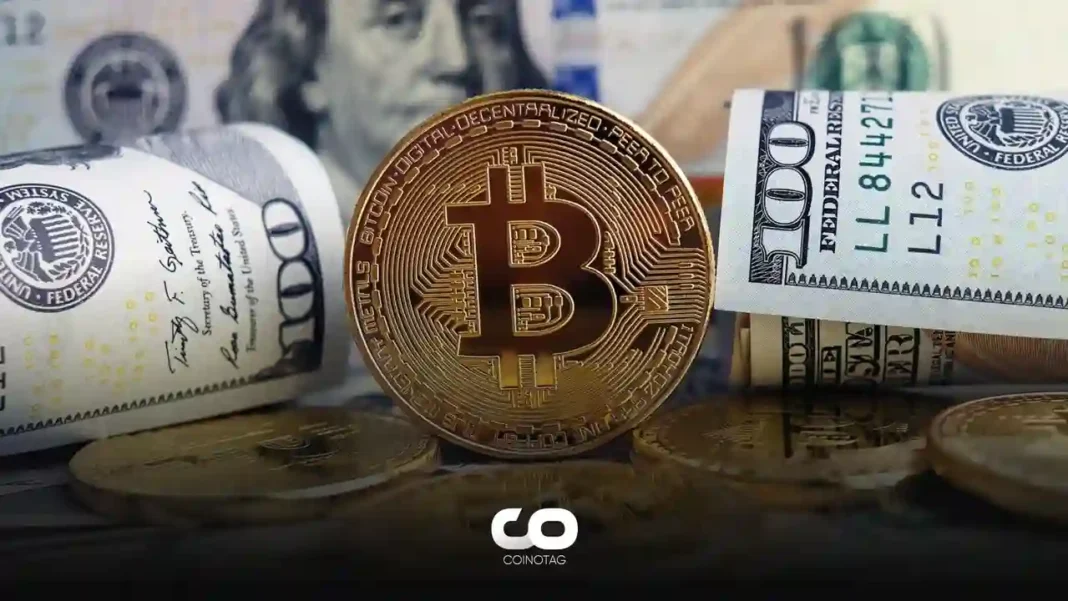| COINOTAG recommends • Exchange signup |
| 💹 Trade with pro tools |
| Fast execution, robust charts, clean risk controls. |
| 👉 Open account → |
| COINOTAG recommends • Exchange signup |
| 🚀 Smooth orders, clear control |
| Advanced order types and market depth in one view. |
| 👉 Create account → |
| COINOTAG recommends • Exchange signup |
| 📈 Clarity in volatile markets |
| Plan entries & exits, manage positions with discipline. |
| 👉 Sign up → |
| COINOTAG recommends • Exchange signup |
| ⚡ Speed, depth, reliability |
| Execute confidently when timing matters. |
| 👉 Open account → |
| COINOTAG recommends • Exchange signup |
| 🧭 A focused workflow for traders |
| Alerts, watchlists, and a repeatable process. |
| 👉 Get started → |
| COINOTAG recommends • Exchange signup |
| ✅ Data‑driven decisions |
| Focus on process—not noise. |
| 👉 Sign up → |
- The United States saw Bitcoin and the broader cryptocurrency market facing selling pressure as soon as it released the Producer Price Index (PPI) inflation data for February on Thursday, March 14.
- As the market awaits the Federal Open Market Committee (FOMC) meeting scheduled for March 20, traders are preparing for a potentially volatile weekend.
- Questions are arising about the possibility of a short-term market decline before a potential rally leading Bitcoin (BTC) to $150,000 by the end of the year.
Bitcoin price made a sudden drop to $68,000 earlier in the day: Will this drop change Bitcoin’s direction?
Bitcoin Price Takes a Dive in Early Hours

The United States saw Bitcoin and the broader cryptocurrency market facing selling pressure as soon as it released the Producer Price Index (PPI) inflation data for February on Thursday, March 14. At the time of press, Bitcoin, with a market capitalization of $1.342 trillion, was trading at a price of $68,260.195, representing a 6.95% decline.
As the market awaits the Federal Open Market Committee (FOMC) meeting scheduled for March 20, traders are preparing for a potentially volatile weekend. QCP Capital, a leading trading firm, reported an increase in perpetual swap open positions over the last 24 hours, indicating increased activity in the market.
| COINOTAG recommends • Professional traders group |
| 💎 Join a professional trading community |
| Work with senior traders, research‑backed setups, and risk‑first frameworks. |
| 👉 Join the group → |
| COINOTAG recommends • Professional traders group |
| 📊 Transparent performance, real process |
| Spot strategies with documented months of triple‑digit runs during strong trends; futures plans use defined R:R and sizing. |
| 👉 Get access → |
| COINOTAG recommends • Professional traders group |
| 🧭 Research → Plan → Execute |
| Daily levels, watchlists, and post‑trade reviews to build consistency. |
| 👉 Join now → |
| COINOTAG recommends • Professional traders group |
| 🛡️ Risk comes first |
| Sizing methods, invalidation rules, and R‑multiples baked into every plan. |
| 👉 Start today → |
| COINOTAG recommends • Professional traders group |
| 🧠 Learn the “why” behind each trade |
| Live breakdowns, playbooks, and framework‑first education. |
| 👉 Join the group → |
| COINOTAG recommends • Professional traders group |
| 🚀 Insider • APEX • INNER CIRCLE |
| Choose the depth you need—tools, coaching, and member rooms. |
| 👉 Explore tiers → |
In the short term, risk reversals for both Bitcoin (BTC) and Ethereum (ETH) are currently skewed towards call options, indicating cautious sentiment among investors. However, QCP Capital noted strong demand for year-end BTC call options with strike prices ranging between 100,000 and 150,000, signaling bullish expectations for the cryptocurrency’s performance by year-end.
Questions are arising about the possibility of a short-term market decline before a potential rally leading Bitcoin (BTC) to $150,000 by the end of the year. While perpetual funding rates and forward curves remain elevated, QCP Capital sees spot-forward spreads as an attractive opportunity for trading without risk, ranging from 20-30%.
| COINOTAG recommends • Exchange signup |
| 📈 Clear interface, precise orders |
| Sharp entries & exits with actionable alerts. |
| 👉 Create free account → |
| COINOTAG recommends • Exchange signup |
| 🧠 Smarter tools. Better decisions. |
| Depth analytics and risk features in one view. |
| 👉 Sign up → |
| COINOTAG recommends • Exchange signup |
| 🎯 Take control of entries & exits |
| Set alerts, define stops, execute consistently. |
| 👉 Open account → |
| COINOTAG recommends • Exchange signup |
| 🛠️ From idea to execution |
| Turn setups into plans with practical order types. |
| 👉 Join now → |
| COINOTAG recommends • Exchange signup |
| 📋 Trade your plan |
| Watchlists and routing that support focus. |
| 👉 Get started → |
| COINOTAG recommends • Exchange signup |
| 📊 Precision without the noise |
| Data‑first workflows for active traders. |
| 👉 Sign up → |
Despite the potential for short-term selling pressure, analysts believe these fluctuations will not have a lasting impact on the overall upward trend, particularly with the continuous demand for daily spot BTC ETFs. Investors are closely monitoring market developments ahead of the FOMC meeting, which could further influence trading activity in the coming days.
Changing Market Sentiment
Data from Greeks.Live indicates a shift in the widespread narrative around ETF inflows, with a noticeable decline in implied volatility (IV) across all major periods in recent days. Additionally, a lack of clear directional bias in block option orders signals weakening market sentiment.
| COINOTAG recommends • Traders club |
| ⚡ Futures with discipline |
| Defined R:R, pre‑set invalidation, execution checklists. |
| 👉 Join the club → |
| COINOTAG recommends • Traders club |
| 🎯 Spot strategies that compound |
| Momentum & accumulation frameworks managed with clear risk. |
| 👉 Get access → |
| COINOTAG recommends • Traders club |
| 🏛️ APEX tier for serious traders |
| Deep dives, analyst Q&A, and accountability sprints. |
| 👉 Explore APEX → |
| COINOTAG recommends • Traders club |
| 📈 Real‑time market structure |
| Key levels, liquidity zones, and actionable context. |
| 👉 Join now → |
| COINOTAG recommends • Traders club |
| 🔔 Smart alerts, not noise |
| Context‑rich notifications tied to plans and risk—never hype. |
| 👉 Get access → |
| COINOTAG recommends • Traders club |
| 🤝 Peer review & coaching |
| Hands‑on feedback that sharpens execution and risk control. |
| 👉 Join the club → |
Market analysts noted that the current sentiment resembles a cooling-off phase historically following the start of a bull market, as reported by Greeks.Live. However, Bitcoin ETF daily inflows hit their lowest level in March on Thursday.
According to data from SoSoValue, March 14 saw significant movements in Bitcoin spot ETFs, with notable inflows and outflows. Grayscale’s GBTC ETF experienced a significant net outflow of $257 million in a single day. However, BlackRock’s IBIT ETF stood out, recording a notable net inflow of $345 million, contributing to its historical net inflow reaching $12.37 billion.
| COINOTAG recommends • Members‑only research |
| 📌 Curated setups, clearly explained |
| Entry, invalidation, targets, and R:R defined before execution. |
| 👉 Get access → |
| COINOTAG recommends • Members‑only research |
| 🧠 Data‑led decision making |
| Technical + flow + context synthesized into actionable plans. |
| 👉 Join now → |
| COINOTAG recommends • Members‑only research |
| 🧱 Consistency over hype |
| Repeatable rules, realistic expectations, and a calmer mindset. |
| 👉 Get access → |
| COINOTAG recommends • Members‑only research |
| 🕒 Patience is an edge |
| Wait for confirmation and manage risk with checklists. |
| 👉 Join now → |
| COINOTAG recommends • Members‑only research |
| 💼 Professional mentorship |
| Guidance from seasoned traders and structured feedback loops. |
| 👉 Get access → |
| COINOTAG recommends • Members‑only research |
| 🧮 Track • Review • Improve |
| Documented PnL tracking and post‑mortems to accelerate learning. |
| 👉 Join now → |








